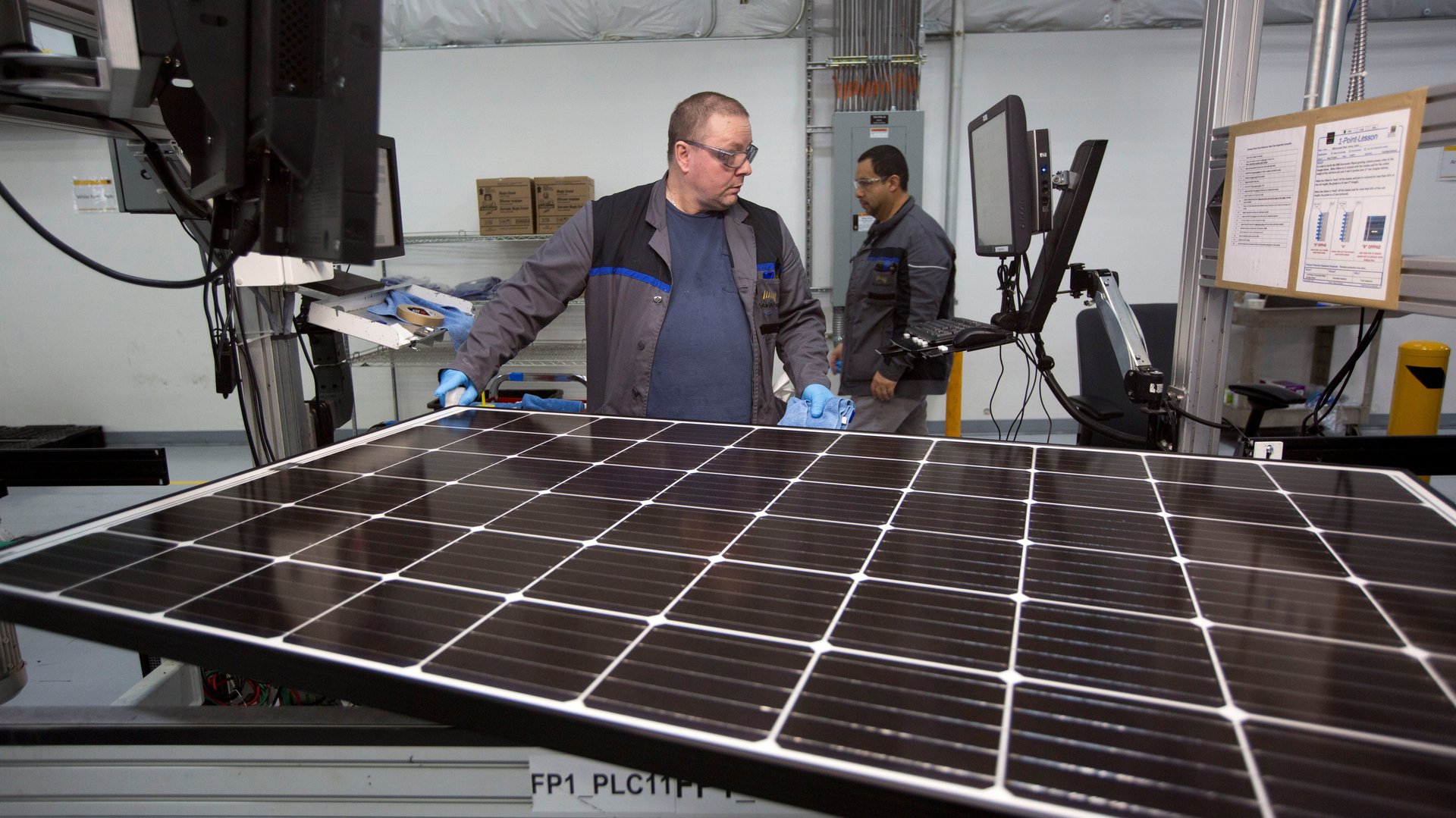Trump should use solar tariff proceeds to fund an US solar panel gigafactory
US president Donald Trump’s decision to levy a 30% tariff on imported solar panels will not save American solar manufacturing any more than his efforts to prop up coal will save that industry. For years now, American solar companies have largely thrived on ever-cheaper imported solar panels, so this will be a blow, not a boon, to the sector as a whole and could cost US taxpayers $400 million, as Quartz has reported.


US president Donald Trump’s decision to levy a 30% tariff on imported solar panels will not save American solar manufacturing any more than his efforts to prop up coal will save that industry. For years now, American solar companies have largely thrived on ever-cheaper imported solar panels, so this will be a blow, not a boon, to the sector as a whole and could cost US taxpayers $400 million, as Quartz has reported.
But let’s assume that Trump’s decision reflects a true desire to protect the rapidly growing, 260,000 Americans-strong solar industry, while at the same time promoting local manufacturing. If that’s the case, then Trump should invest the money from the tariffs into a giant American factory to manufacture solar panels.
Before the tariffs were announced there was initial speculation that foreign firms may move some manufacturing operations to the United States. The tariffs announced Monday seem too low and will be implemented for too short a time period to encourage that kind of investment.
But, by using the money to incentivize a large-scale solar panel plant, Trump could actually accomplish something for Americans. A gigaplant—a 1,000 MW solar manufacturing facility that includes the production of silicon all the way through modules—would offset some of the job losses for solar installers that will result from the tariff, as installation jobs have been driven by the low-price panels Trump is now punishing. It would also send a signal that American investment in panel manufacturing is worthwhile, since the scheduled tariff revenues would be a reliable incentive.
And there’s plenty of money to get started. Because this is one policy where Trump is actually following in President Obama’s footsteps. America already has $1.6 billion in the bank from tariffs Obama placed on imported panels. Trump’s tariffs, which are in addition to Obama’s, will likely raise a similar amount—each year.
The $1.6 billion sitting in the bank now, and the additional $1.6 billion being raised every year, is more than enough to create cost-effective American solar manufacturing, provided that it’s faithfully and thoughtfully put to good use. It would be the incentive the industry needs to refocus on domestic manufacturing instead of taking advantage of cheap overseas panels.
In general, the US government should not be picking winners and losers, but there is a right way to accomplish this. The US already has operating silicon manufacturing plants in Montana, Washington, and other states. The cost of converting each silicon manufacturing facility into a gigafactory would be about $1 billion per 1,000 MW manufacturing facility. The key to the success of these plants would be find world class plant operators—who happen to be Chinese companies. Each plant would employ almost 1,000 people and have indirect benefits of many times that.
But given the Trump Administration’s track record on deal making, it is hard to see a negotiated compromise getting completed with the Chinese government, which would be necessary to see such a positive policy coming to pass. If Trump is adamant about boosting American manufacturing though, he’ll defy his critics and push forward with solar manufacturing plants that could employ thousands of people in areas of the country that have voted consistently with his party.